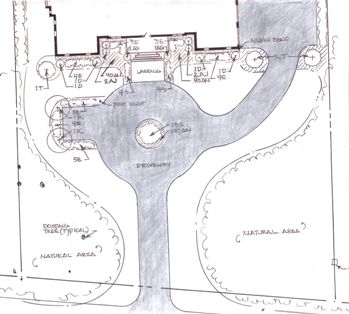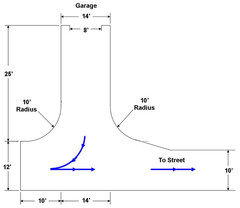
Dimension Driveways
Dimension Driveways Warrington - Design and install pattern imprinted concrete driveways and patios around Warrington and Cheshire. With numerous different designs and colours available, there is a drive to suit everyone with the added benefits of low maintenance, weed, moss free.
There are two types of asphalt for driveways. One driveway installation comes from a hot mixture of aggregate rocks of different sizes held together with a petroleum-based binder. Special machines compact the hot mix asphalt (HMA) to the proper density and thickness for a driveway installation. The other type of asphalt mix uses a cold mixture of aggregate and binder.
Unfortunately, this type doesn’t hold up well in warm climates. As the temperatures warm, the binder softens around the aggregate and the surface develops soft spots. No matter what type of asphalt you choose, or how thick you put it on the driveway, there must be a solid base under the driveway for it to last. While it’s necessary to follow local building codes, many contractors recommend a compacted base of rock with a depth no less than 8 inches.
Compacting the asphalt during installation is important as well, or the surface may give way during hot weather. The ground surrounding the driveway should drain well. The driveway should have a slope of at least 1/4 inch per foot.
The local zoning board establishes how wide each driveway must be, as well as the depth of the asphalt on the driveway. The amount of crushed rock base can affect the depth of asphalt required, with thicker bases requiring less asphalt. Zoning boards also set up rules for building asphalt driveways on the city’s share of the apron, or the area between the sidewalk and the roadway. The zoning board establishes the size and kind of expansion joints necessary between city-owned asphalt and/or cement and the homeowner’s asphalt driveway.
Consider Needs and LayoutThe first step in designing a driveway is assessing your needs and your property’s layout. If you need to park two or more cars, you’ll obviously require a larger space.
You may also want room to turn around, which requires a wider driveway. The location of your garage also plays a key role in your driveway design since the driveway typically leads to the garage. If your garage faces the street, it’s easy to connect the two. If you have a side-facing garage or a detached one near the rear of your property, you may need to add curves to provide access from the street. Your property’s terrain should also factor into the driveway design.
You may want to avoid placing it on a steep slope or near a cluster of large tree. Finally, you’ll want to decide what style you want for your driveway – if you have a large, formal home, you may want to create a grand entrance for the driveway. If you have a smaller home and want to showcase your landscape, a simple style is your best bet. Choose ShapeOnce you have an idea of what you need and want in your driveway, you can choose a shape.

A straight driveway is your best option if there is a short distance between your garage and the street. It creates a simple, efficient driveway that allows your house and landscape to take center stage.
On the other hand, if there's a long distance between your house and the street, a straight driveway can give your property a grand estate-like feel. However, if you need to park multiple cars or want to eliminate the need to turn around or back out of your driveway, a circular shape is ideal. It features an entrance at the street and curves around in front of your home to form a separate exit lane back to the street. If you have a smaller yard, though, a teardrop shape may work better. It has a single entrance at the street and curves back toward it so you can also use it as an exit. For a home with a garage that doesn't face the street, or is behind the house, a curved driveway is the way to go. It also works well if you have trees or other landscape features that you need to work around.
To ensure that your driveway can accommodate all types of cars, opt for broad, sweeping curves for easy navigation. Retro city rampage dx. Choose MaterialsAfter the shape, your driveway's paving material plays the most important role in determining its look. Poured concrete and asphalt are two of the more common options because they tend to be cost-effective.
While both get a bad rap for a boring look, they actually offer several design options. Concrete and asphalt can both be stamped and colored to resemble other paving materials like stone or brick. If you want a truly elegant look for your driveway, though, brick is an ideal option.
While bricks traditionally come in red, you can also find pink, brown, gray and white. Concrete and stone pavers offer a look similar to brick, but they come in a wider range of shapes, sizes and colors for a variety of design possibilities. However, if you prefer a more rustic look, a loose material like gravel or river rocks is a better option. For a coastal landscape, crushed seashells make a fitting driveway surface too. AccessorizeAfter determining your driveway's shape and material, you can choose accessories to give it a more decorative look. If you want it to have a grand appearance, add pillars or columns to the entrance. You can also add a decorative gate for security and a more formal look.
For a rustic feel, try a grouping of landscaping boulders instead of pillars or columns. Greenery, such as shrubs, specimen trees and flower beds, is also ideal for lining an entire driveway to make it more eye-catching. Don't forget lighting – it makes it easier to pull into your driveway after dark.
You can opt for lamppost style or in-ground fixtures that are flush with the driveway surface for discrete lighting.